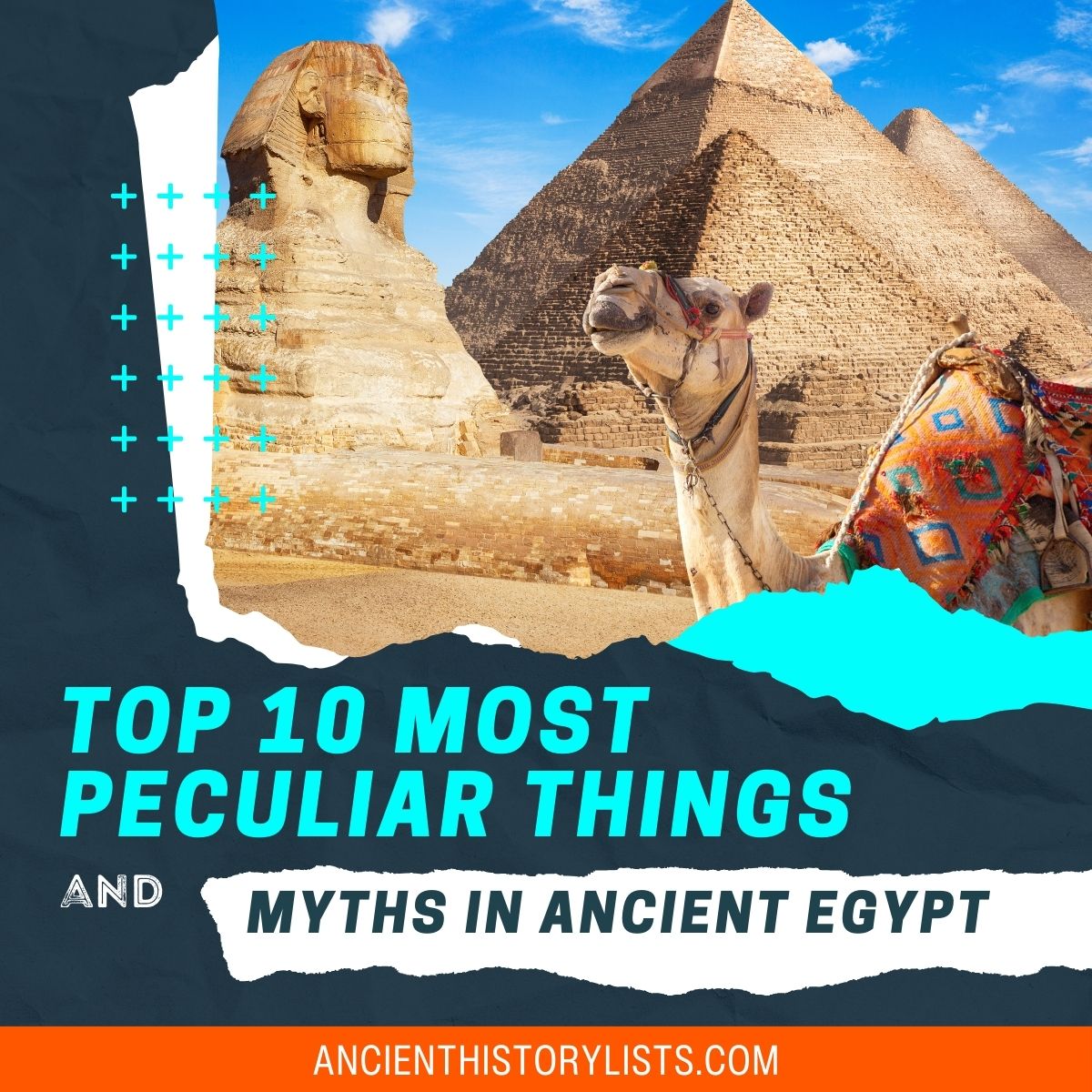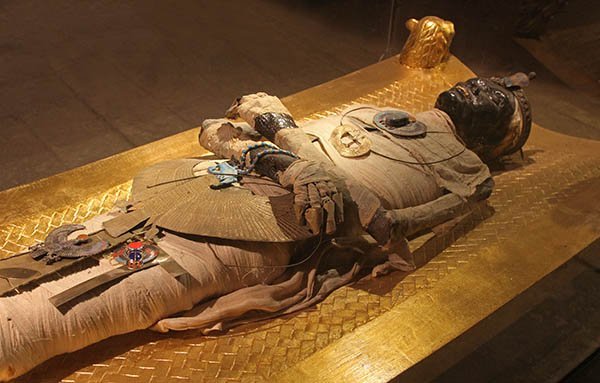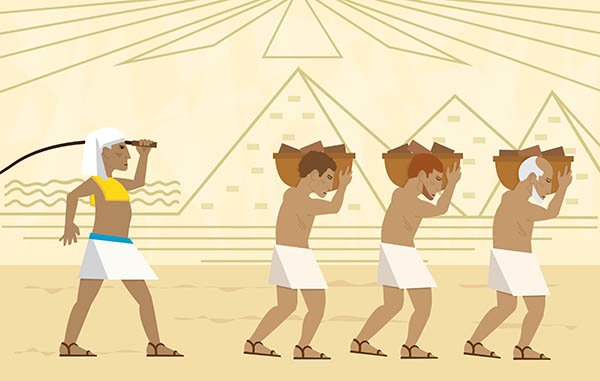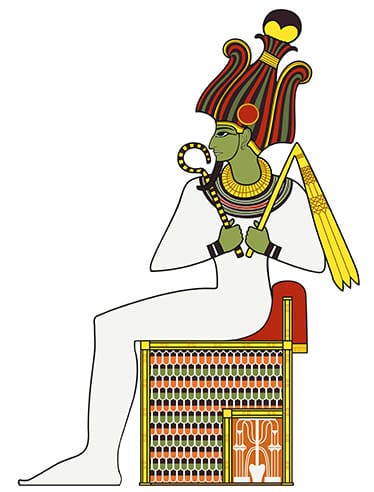The people of Ancient Egypt believed in signs from the natural world and much of their decision-making was based on them. Their beliefs were so great that they could be considered superstitious. For example, their belief in an afterlife was so strong that they made sure everything that the person owned went with them into their tomb.
They also had many myths about the sun god Ra whom they used to worship, and about the many pyramids that they built.
The beliefs of Ancient Egypt became ever more complex over time as people analyzed and embellished them. They drew further conclusions from their assumptions, and many myths and traditions grew out of them during the Ancient Egyptian era. Some of these famous beliefs and customs were:

1. Camels Were Never Used for Transportation
Egyptians were very fond of animals. This was evident from the fact that they did not use animals to lift heavy loads but asked their slaves to do it. As Egypt was mainly desert, camels were in abundance, they were strong, and could have easily been used for transportation, but they weren’t. Slaves, who were also readily available, were made to do the heavy lifting instead.
Donkeys, however, were used as the primary animal to transport goods from kingdom to kingdom. The river Nile flowed through Egypt and the people make good use of this waterway as well. They used to believe that the sun god was sailing alongside them on his solar boat as they were sailing in their boats on earth.
2. The Dead Were Not Considered Dead
The Egyptians believed in an afterlife, and made sure that the dead were mummified with all their luxuries by their side in the tomb, such as gold and ornaments. The dead were considered to be still present and living among them.
They maintained the sense of the person still being with them by providing offerings at the tomb at intervals throughout the year, believing that the dead person also needed to have food regularly, just like the living.
3. The Tradition of Mummification

The Egyptians were very careful with the process of mummification. They understood that it would prevent the dead from being damaged and the body would remain intact for longer.
The Egyptians had a unique way of mummifying their loved ones. While making a mummy, they took as many steps as they could to ensure that the body was well preserved for as many days as possible such as bandaging it and applying spices.
They were knowledgeable about the treatments needed and the amount of spices that were required to stop the body from rotting too soon. The intestines were removed, and the brains were taken out through the nose. However, the heart was left as they believed that this was where a person’s soul lived.
4. Animals Were Also Mummified
Animals in Ancient Egypt were loved and taken care of. Most of the pharaohs had pet cats and dogs and these animals were often treated the same or better than humans. People also used to keep pet camels and donkeys and rarely used them for work, preferring to use their slaves instead. It is therefore unsurprising that archaeologists have found mummified animals in tombs as well. They were bandaged in the same way, and tombs were built for them as well.
5. It Took 100,000 Slaves to Build One Pyramid

Pyramids were structures used to house the mummies. These pyramids were three-dimensional triangles and were built with utmost care as they housed the tombs of the dead. It was believed that it took 100,000 slaves at a time to build these pyramids, but after much research, and to everyone’s surprise, it was discovered that they were actually built with the help of only 20,000 slaves.
These fascinating pyramids are symmetrical, and about 130 pyramids were built in ancient Egypt, many of them still existing today. They show the amount of work that went into the construction and the materials that were used.
6. Those Who Tried to Open the Tombs Were Cursed
Not everyone who died in Ancient Egypt had a tomb, as these were only built for the chosen few: pharaohs, their wives, or members of the royal family. The tombs contained all of a person’s valuables so that they could continue to live as themselves in the afterlife.
It was believed that anyone who opened a tomb would be cursed, and some of the archaeologists who opened the first tombs died within a decade, supposedly proving this theory and discouraging people from opening further tombs. They also believed that as gold and treasures had been buried with the instruction never to be accessed under any circumstances, this would anger the dead even more.
The existence of harmful bacteria, worms and other contaminants was not taken into consideration as they were happy to believe in the curse instead.
7. Slaves Were Buried with the Bodies of Their Pharaohs
As the tombs were basically made for the pharaoh’s comfort and well-being, people were encouraged to include all that he could possibly require to live comfortably in his afterlife.
Initially, this only included valuables such as gold, clothes, slippers and other materialistic things that their pharaohs might require, but soon they concluded that the people who had served the pharaoh should also be buried along with him so that they could continue to help the pharaoh with his work in the afterlife.
Very quickly, real slaves were replaced by stambi, statues of slaves placed in the tombs to help the pharaoh, thus preventing the living slaves from being killed. These stambi have been found by archaeologists in only a few pharaohs’ tombs but it was believed to be a widespread custom which was encouraged by the Ancient Egyptians who felt that the slaves should not have to sacrifice their own lives, and could then go on to serve other pharaohs.
8. Servants Were Coated with Honey
Servants were always on hand to help the pharaohs and were viewed more like slaves. They had to be at the pharaohs’ disposal at all times or risk losing their lives. They were not treated well and were often asked to do jobs that weren’t appealing at all.
For example, to prevent the pharaoh from being disturbed by flies while he was eating, servants were coated with honey and made to stand nearby. The flies would get stuck to the honey on the servant’s body and not be a nuisance to the pharaoh while he enjoyed his meal.
The slaves were made to adhere to these peculiar rules, and they were always present at the pharaoh’s mealtimes.
9. Nobody Could See the Pharaoh’s Hair

Osiris was a very important Egyptian god who always wore a golden crown. The pharaohs started to imitate Osaris to magnify their image and draw respect from the people. Out of this grew the belief that the pharaoh’s hair should not be seen and the pharaohs also began to cover their beards with a golden mask.
This tradition continued until the end of the era. The crown was very important in distinguishing between a king, a prince and the lower levels of society. The pharaohs loved to be worshipped and this is why they tried to imitate the gods, sometimes even adopting the gods’ names and forcing the people to worship them instead.
10. Pharaohs Wore Sandals That Had Their Enemies Painted on the Soles
The pharaoh King Tut only lived for 18 years but greatly exploited the people of his kingdom. He even renamed the god that they worshipped after himself. The people were not very happy with what was happening and after his death, they destroyed many monuments and buildings that he built. He was, however, a progressive thinker, believing that his siblings should stop fighting with each other and live in peace. As Tut was disabled, he avoided war and asked others not to fight either. His efforts produced no results.
When archaeologists excavated his tomb and found his slippers, they saw that they had paintings of his enemies on the soles. This was to show contempt and disrespect to his enemies as he was literally walking upon them.
Other Wide-Reaching Achievements
The strongly held beliefs and traditions of the Ancient Egyptians spread out to many parts of the African continent. Despite its many superstitions and beliefs, Ancient Egypt was forward-thinking and greatly advanced in many areas.
The Egyptians were the first to discover paper, toothpaste, and many other everyday items that are still in use today. They were also known for their superior knowledge of construction. Their buildings were perfectly geometrical although they had no access to weighing or measuring instruments. Their structures were not only beautiful but also strong.
Although some of these myths and traditions may not be entirely rational, they were believed very strongly by the Ancient Egyptians, making them stand out as a fascinating and intriguing people, famous for their rich history and culture.